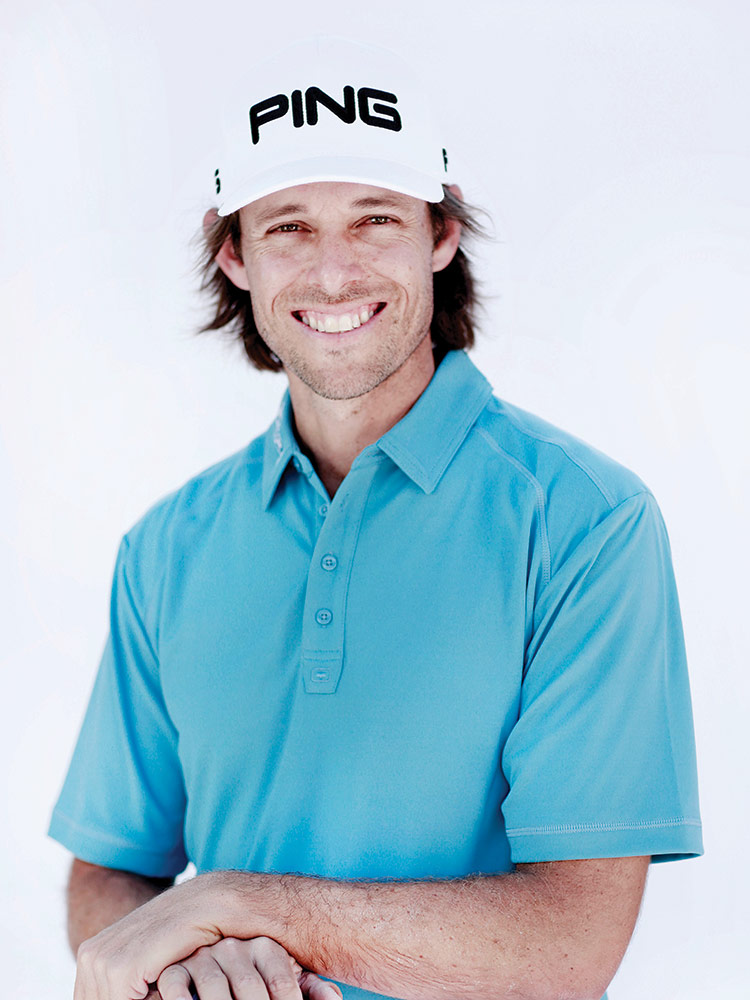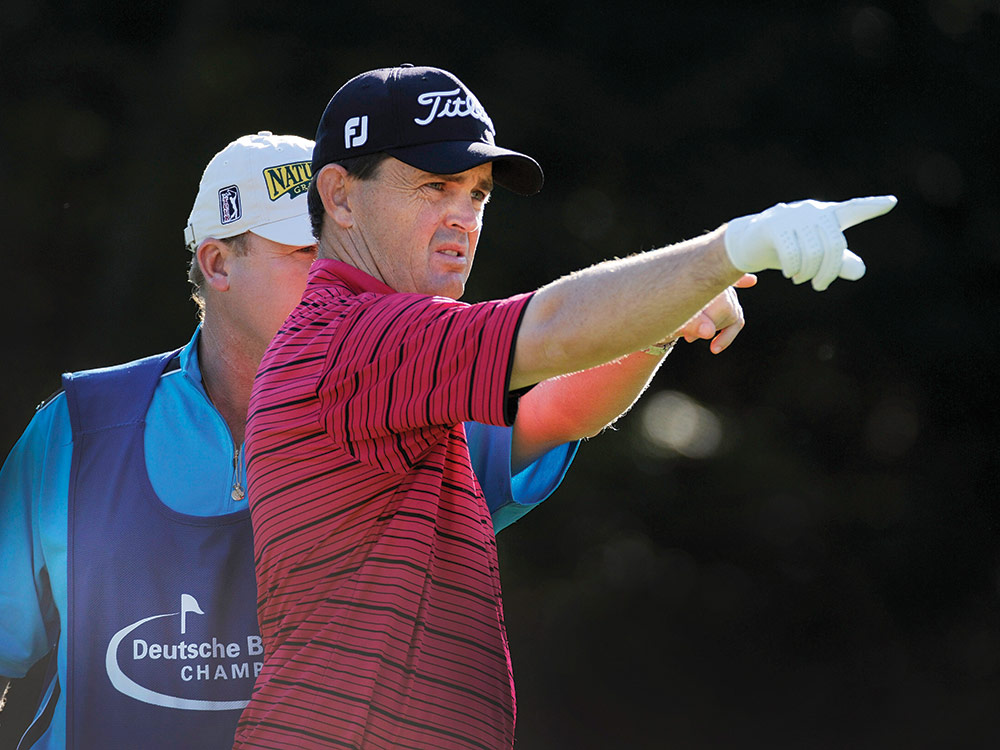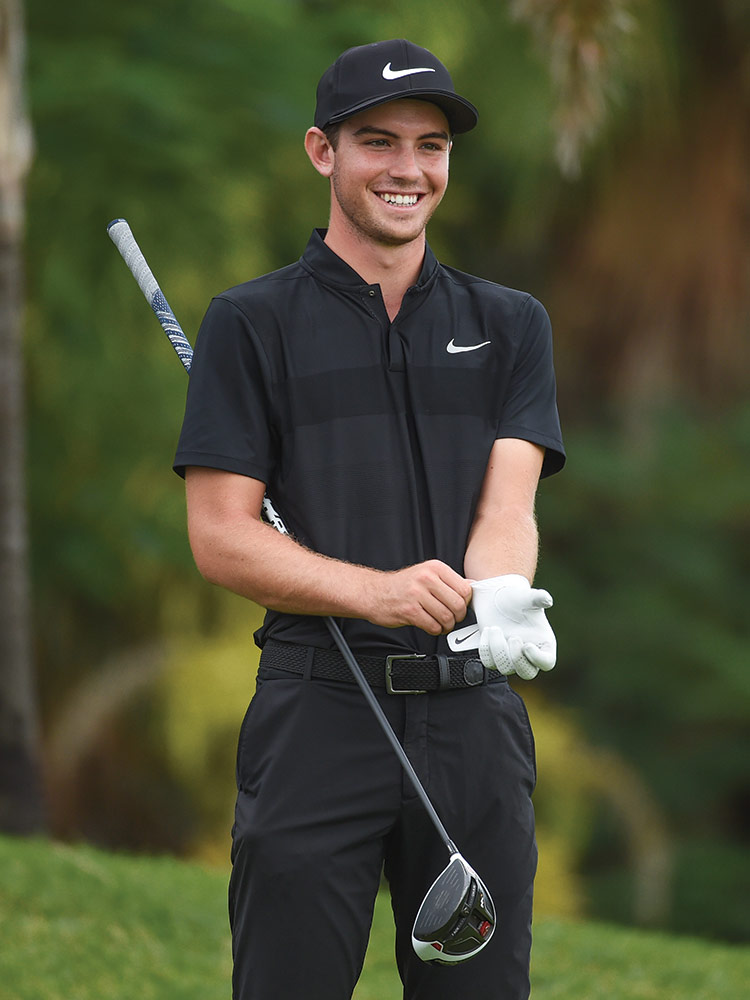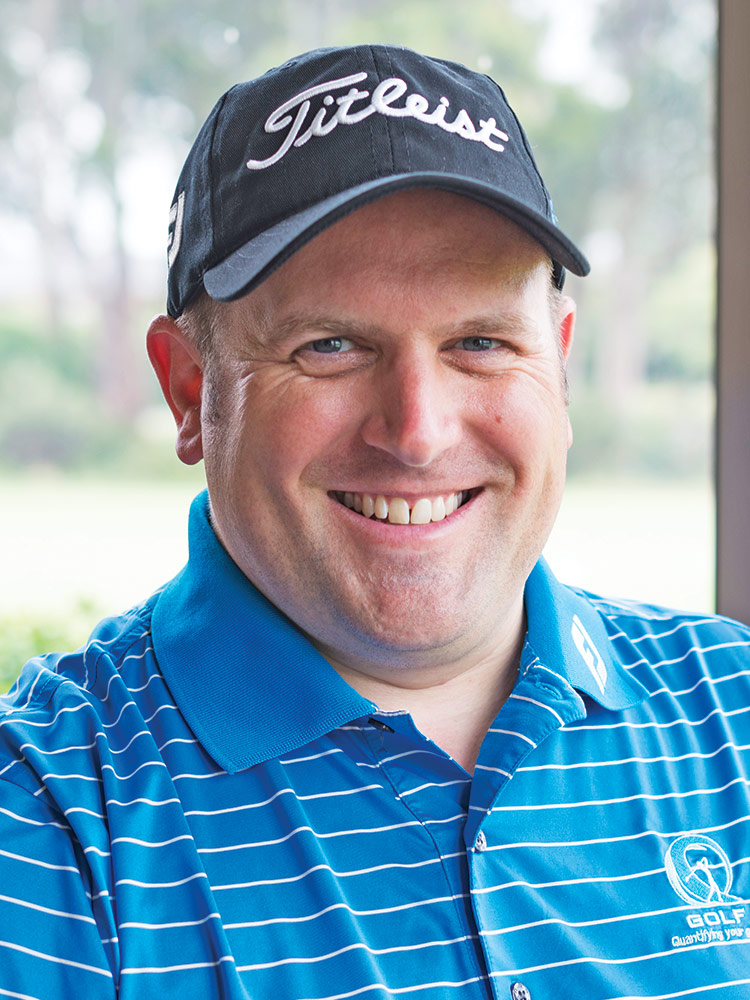HUNDREDS of talented Australian amateurs take the step towards a professional career each year by entering the PGA of Australia’s trainee system. While a number will ultimately forge careers as vocational professionals, many others will pursue the path of a touring professional.
The chance of sustaining a tour career with some sort of longevity is full of pitfalls. Even Masters champion Adam Scott revealed recently he didn’t work as hard as he could early in his career.
“I didn’t have all this knowledge when I was younger,” he said. “The right messages weren’t getting through from whoever was around me to work harder and make the absolute most of this opportunity.”
But what are the messages and what mistakes do young players make? Australian Golf Digest interviewed past and current players as well as experts associated with the game to identify the Cardinal Sins Of Rookie Pros.
Tinkering With Their Game And Gear
Former teen sensation Aaron Baddeley regrets he didn’t understand how to manage his game during the first few years on tour. He began to second-guess his swing and complicated matters by switching teachers from Dale Lynch to David Leadbetter.

“If I understood how to manage my game back then, I felt like I would’ve done a better job,” says Baddeley, adding that he should have stuck to three drills rather than trying one thing one day and another thing the next day.
“If I did X, Y and Z every day, then I’m not going to be too far away from the swing being in good shape … You always have the same faults unless you work on something new.”
It’s the most common mistake young pros make once they get on tour, according to two-time Presidents Cup representative Nick O’Hern – changing things on the assumption they need to take their game to another level.
“In reality they don’t need to make any changes because what they have is good enough to get them there in the first place,” O’Hern says. “The only adjustments needed are usually minor things such as working out a good schedule, managing their time efficiently and making sure they don’t wear themselves out.”
The temptation of new technology is just one example. “I have seen guys act like kids in a candy store with all the new and free equipment that now becomes available. They start trying out different gear and all of a sudden throw a new club in the bag that hasn’t been tested properly – with the inevitable poor results.”
Two-time Australian Open champion Greg Chalmers adds: “I also watched a lot of guys change equipment early in their careers and it didn’t work. That’s a bit of a trap out here.
“You’re better off sticking with what you’ve got and focus on settling in, getting your card and playing rights sorted out, and think about equipment later.”

Being Susceptible To Peer Pressure
Talking to a support team and peers can help a player get a broader view on what does and doesn’t work. However, a big cardinal sin is becoming susceptible to peer pressure, says West Australian state coach Ritchie Smith.
If another player is doing something well or differently, a lot of young pros take it upon themselves to copy that player, often with disastrous consequences. The best example would be changing coaches based on the success of a contemporary. “That’s just taking something out of their existing structure. That’s a crazy thing they do. And it happens a lot,” Smith says.
Being Disorganised
As an elite amateur in the Australian national coaching network, there are a whole set of eyes to monitor how a player is progressing. But once the player turns professional it can be a little overwhelming how many things there are to do: obtaining visas, hiring caddies, tracking expenses, keeping receipts, booking hotels and
flights, etc.
A young professional can’t afford to be disorganised. No better example comes to mind than Cameron Smith’s monumental stuff-up. After turning pro in 2013, the talented young Queenslander missed his tee-time at the first stage of qualifying for the Web.com Tour … by one whole day.
Fortunately, the embarrassment triggered a change in Smith’s attitude. He progressed through two stages of qualifying for the Asian Tour and played his way onto the US PGA Tour with a T-5 at the 2014 CIMB Championship in Kuala Lumpur and T-4 at the 2015 US Open.

Lack Of Funding And A Good Support Network
Insufficient finances are a reason why some young golfers are forced to abandon a pro career. Certainly, the window to make it on tour is quite large as long as a player has money behind them.
Jason Day was able to pursue a pro career after being given $100,000 in sponsorship from Michael Pilkington and Mr Lu, two philanthropic benefactors he met as a teenager while competing in the Master Of The Amateurs.
“I don’t think you can say it’s one week or 10 years,” says Ritchie Smith. “Justin Rose didn’t make a cut for 21 tournaments and he seems to be going alright. It’s whether mentally you can deal with the difficulties of your initial period out there.”
That’s the very reason Golf Australia, through funding from the Kinghorn Foundation, created its Rookie Program. The sport’s governing body wants the transition from amateur golf to the professional game to be as smooth as possible.
Apart from financial assistance of $100,000 per year, it means giving rookies access to the same resources they used to have as elite amateurs in state and/or national squads: coaches, sports scientists, physiotherapists, trainers and dieticians.
“You’re trying to increase their chances to have success at the next level,” says Brad James, Golf Australia’s director of high performance.
Lack of Genuine Desire
While he possessed an abundance of natural talent, what set Jason Day apart from others was mental application and desire. Upon turning pro and moving to America, Day would spend most of his daylight hours at Two Club Golf (now called Windmill Golf Center) near Cleveland where his coach Colin Swatton and Sean Lynch had opened a peak performance academy.
Day would go around and around the 27 pitch-and-putt holes. Initially, his short game was so mediocre that he could barely shoot 2-under for nine holes. But his insatiable appetite for improvement took him to the point where he shot two course records of 9-under-par on two of the nine-hole loops. Four months short of his 20th birthday, Day’s short-game wizardry netted a Web.com victory to make him the youngest winner on any of the US PGA Tour’s three circuits.
Seeking Instant Gratification
Mind coach Sean Lynch says too many young pros aren’t prepared to go through what he calls a learning plateau. Too many want the quick fix of “finding something on the range today”.
Instead, they should be focusing on a process of self-mastery, the type found in the dirt by Ben Hogan. You have to be prepared to fail in order to develop skill acquisition says Lynch. It’s no use buying five cookbooks if you’re not prepared to burn some pots and pans.
That process of self-mastery is essential with the mental game. The body is controlled by the mind and Lynch says professionals must train themselves to lower anxiety in order to shoot lower scores. It’s learning how to be patient and not losing rhythm by “forcing” the game.
Training Against Inferior Competition
West Australian state coach Smith thinks it’s a wise investment for an aspiring pro to join a club where there is significant competition. That could mean relocating to America and spending $25,000 a year on a club membership. It’s no coincidence the best pros congregate around courses such as the Bear’s Club in Florida or TPC Sawgrass.
“Join somewhere where you would get some competition. You’re not going to get that down at your local golf club in Australia. You’re going to get that at a place where PGA Tour players play. That could be Florida or it could be Arizona or somewhere else.
“Start watching those guys train and you’ll get a pretty good idea of where you’re at. Then if you start having little competitions for money, it’s either play better or go broke. So you’re just hurrying up the process, aren’t you?”
Forgetting You’re An Athlete
A professional golfer is at work from the time they wake up until when they go to bed at night. And a professional is an athlete who has to make good choices. However, it’s all too easy to make bad choices on tour because bad choices are the easy choices.
Food is a huge source of poor decision-making. It’s easy to eat that extra bread roll at dinner because it’s cheap. But the downside is feeling slow and bloated the next day. Not being diligent with off-course training is another source of poor decisions. For instance, not adhering to physio protocols (such as performing strength and conditioning drills) when a player is rooming with somebody else.
Penny Pinching And Not Treating Tour Life As A Business
The world’s best players leave little to chance when it comes to preparing for tournaments. They fly business class and may even have a time-share arrangement with a private jet. They’ll stay on course or as close as possible to the tournament venue. They may bring their coach and will definitely bring a consistent caddie.
Top players aren’t worried about the expense – unlike a lot of rookies who might choose a hotel without a gymnasium because it’s $10 cheaper a night. In all likelihood a player’s performance would improve by a couple of strokes from being able to go through their postural and flexibility programs in a gym –outweighing the savings of a cheaper hotel.
Sharing a car for the week with three other pros is another example. It would be more expensive to share between two, but they wouldn’t have to arrive at the course 90 minutes early to accommodate one of the other player’s tee-times.
“The guys who get themselves in trouble are the ones who try to save a few bucks and take a few risks, like not staying in the tournament hotels and looking for something cheaper,” says Melbourne teenager Ryan Ruffels, who played the PGA Tour Latino America in 2016.
“Even if it’s going to cost me a little more, I see it as a little investment in myself. I try to fly premium economy or business on longer flights to places like Argentina and stay in nicer hotels so I’m safe and have good food.”
Neglecting To Scout Courses Properly
Experience counts in all manner of fields, especially professional golf where the workplace changes from week to week. That puts young pros at a distinct disadvantage.
“When you’re a rookie, you have to learn a lot about the golf courses. It’s very difficult to compete against top golfers who know where the pins are going to be,” says Chalmers. “It means you have to do a lot more reconnaissance and work harder in practice rounds, preparing where you’re going to need to hit it for the rest of the week and where the spots to miss the green are.”
Misunderstanding How To Cope With Travel
Week-to-week travel can take a huge toll on touring pros according to Ryan Lumsden, this country’s

foremost biomechanical analyst who works with Golf Australia’s national coaching network. From his experience analysing movement and body functions in the full swing, Lumsden says rookies misunderstand how much work is required to stay in peak physical shape on tour.
“Slowly but surely over time they don’t do enough work to maintain their body. So they start to lose feels and their swing starts to feel a little bit off. Things start to get a little bit more inconsistent as a result. Then as they get inconsistent, they start looking for feels and they’re into the whole find-it-lose-it scenario.”
Lumsden also says nutrition strategies fall away on tour and players gradually run themselves down with energy. Some get sick and, in the worst-case scenario, a few end up injured because their bodies are deteriorating a little bit.
“Quite often they try and find feels by hitting more balls. Then in the process of hitting more balls they overdo it and start to get little niggles, aches and pains. And it just gets into that vicious cycle.”
Allowing Distractions To Hinder Performance
Travelling overseas to play tournament golf can be the first time away from home for a substantial length of time for many young pros. It can be lonely out on tour and rookies can make poor decisions that aren’t conducive to elite performance.
Young male pros are more inclined to chase women and drink excessive amounts of alcohol. Hence, the choice of company, in particular a roommate, can be a very important decision when trying to stay
away from distractions.
Being Too Dependent On A Coach For Advice
Sometimes a tour pro will feel on top of the world while at other times they’ll be out of sync with their biorhythms. So it’s an ability to be self-reliant that is a sign of a good tour professional according to leading instructor Denis McDade.
“One of the things I don’t want is a player to be on the other side of the world and hit a couple of bad shots, turn around, I’m not there and they think, I’m not going to be able to play well this week,” says McDade, the coach of Marc Leishman, Marcus Fraser, Matthew Griffin, Bryden Macpherson, Ashley Hall and Ryan Ruffels.
“I want them to have that self-reliance and presence of mind to objectively step back from what they’re doing.
“I’m a great believer that you’re trying to build an athlete that can stand on their own two feet for the greater part of their career. And to some extent, your job is to make yourself almost obsolete.”
Underestimating The Standard On Tour
If a rookie had any illusions about how hard it is to crack the US PGA Tour, they need only refer to the results of Monday qualifying for this year’s Shell Houston Open. A staggering 34 players shot 67 or better at Cypresswood Golf Club in Spring, Texas. However, there were only four spots available.
Three went to Riley Arp (10-under 62), Wesley McClain (63) and Andres Gonzales (63). The six players that shot 64 went into a playoff and Jason Gore survived to tee off in the Houston Open. Only Gonzales (tied 23rd) and McClain (80th) made the cut.
Shooting scores in the mid-60s surely wasn’t what Lee Trevino had in mind when he said: “Two things that are not long for this world: dogs that chase cars and professional golfers who putt for pars.”



